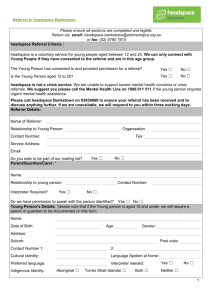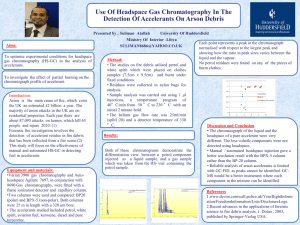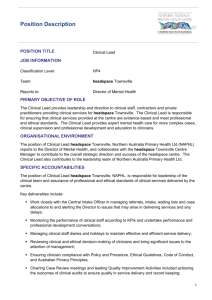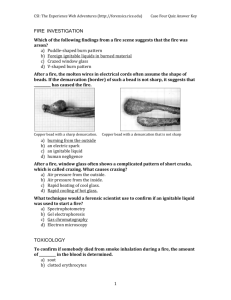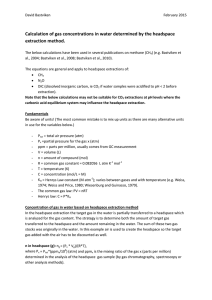This talk's PowerPoint presentation
advertisement
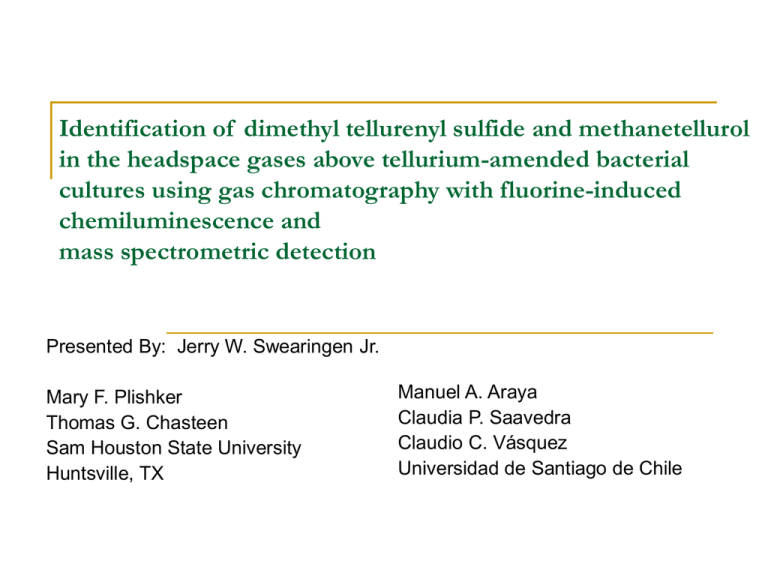
Identification of dimethyl tellurenyl sulfide and methanetellurol in the headspace gases above tellurium-amended bacterial cultures using gas chromatography with fluorine-induced chemiluminescence and mass spectrometric detection Presented By: Jerry W. Swearingen Jr. Mary F. Plishker Thomas G. Chasteen Sam Houston State University Huntsville, TX Manuel A. Araya Claudia P. Saavedra Claudio C. Vásquez Universidad de Santiago de Chile Organo-metalloid detection in headspace gases above bacteria Methods of Extraction Manual Gas Syringe (1mL) Solid Phase Micro Extraction (SPME) Instrumentation Gas Chromatography – F2-induced Chemiluminescence Detection Gas Chromatography – Mass Spectrometry Geobacillus stearothermophilus V Resistant to TeO3-2 and TeO4-2 Growth Conditions of this thermophile Temperature: 60º C Aerobic Environment Difficult to perform headspace analysis. Oxidation of organo-sulfides and tellurides. Volatiles are purged out of the headspace. Genetic Modification of E. Coli JM109 Cells Open Reading Frames (ORF) ORF 600 – UbiE methyltransferase ORF 780 – uroporphyrin-III C-methyltransferase (cobA) ORF 399 – BtuR protein pSP72 cloning vector Plasmid is coded for ampicillin resistance. DNA was inserted at the HindIII restriction site. GC- SCD Chromatogram of E. Coli 1VH Headspace Methanetellurol Was the chromatographic peak dimethyl selenide or methanetellurol? If so, that means the tellurium amendments were contaminated with selenium. Boiling Point of CH3SeCH3 - 54º C Boiling Point of CH3TeH – 57º C Gas Phase Concentrations Temperature: 37º C Headspace Pressure: ~1 atm CH3SSCH3 – 1216 ppbv CH3TeCH3 – 94 ppbv CH3TeH and CH3SSSCH3 standards were not available. GC- MS Total Ion Chromatogram of E. Coli 1VH Headspace Mass Spectrum of dimethyl tellurenyl sulfide CH3TeTeCH3 Mass Spectrum of dimethyl tellurenyl sulfide - CH3TeSCH3 Synthesis of CH3TeH and CH3TeSCH3 There are no commercially available standards of CH3TeH and CH3TeSCH3. A CAS registry number has not been assigned for CH3TeSCH3. Reaction Mixture 25 μL CH3SSCH3 25 μL CH3TeTeCH3 1 mL of Reducing Agent Reducing Agents Used 1.0 M HCl + zinc 1.0 M H2SO4 + zinc 0.5 mM DL-dithiothreitol (DTT) GC-SCD Chromatogram of Headspace Above an Aqueous Reaction Boiling Point Determination Are DMDS, DMDTe, and DMTeS produced from bacterial metabolism? Disproportionation Reaction CH3TeSCH3 + CH3SH CH3TeSCH3 + CH3TeH Exchange Reaction CH3SSCH3 + CH3TeH CH3TeTeCH3 + CH3SH CH3SSCH3 + CH3TeTeCH3 2 CH3TeSCH3 Combination Reaction 2 CH3SH CH3SSCH3 CH3SH + CH3TeH CH3TeSCH3 2 CH3TeH CH3TeTeCH3 The Future – dimethyl tellurenyl selenide – CH3TeSeCH3 Pseudomonas fluorescens K27 Amend bacterium with any combination of: SeO3-2, SeO4-2 TeO3-2, TeO4-2 Synergistic Toxic Effect B.P. of CH3TeSeCH3 is 173º C (based on chromatography). The retention time of this compound is 12.78 minutes. The retention time of CH3SSSCH3 is 12.57 minutes. (170º C) Adjust the temperature ramp to allow for base line separation. Mass Spectrum of dimethyl tellurenyl selenide Acknowledgements This research was supported by the Robert A. Welch Foundation And by FONDECYT (Chile) And by DICYT grants from University of Santiago, Chile And by a doctoral fellowship from MECESUP (Chile)



